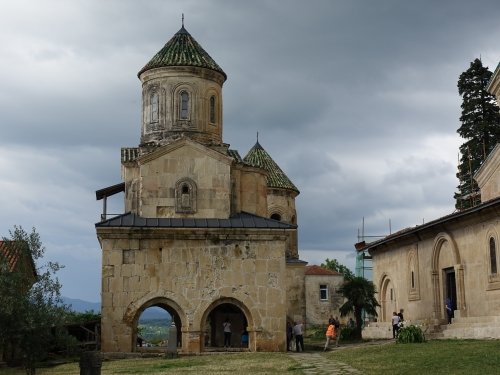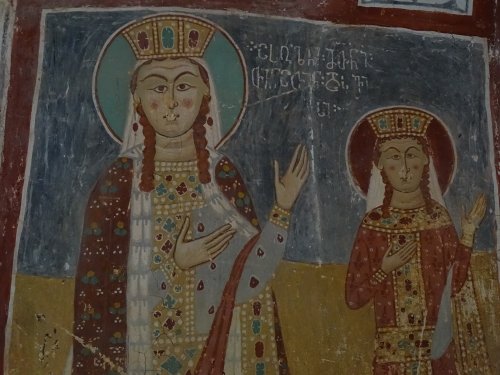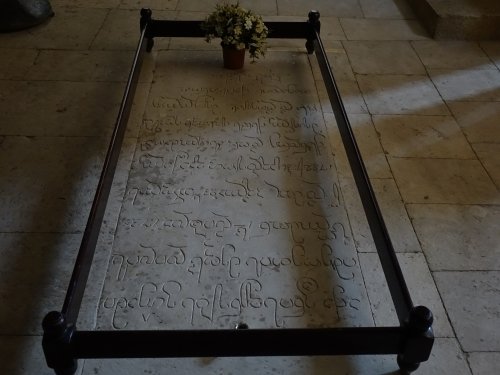Els Slots
WHS #664: Gelati Monastery
Since the retreat of the controversial Bagrati Cathedral, Gelati Monastery can shine in its own right. And what a sight this is. Its wall paintings are overwhelming and intriguing at the same time, because the depicted people far exceed the average list of Christian holy figures. They show saints and historical figures from Georgia and the Byzantine empire in their most beautiful clothing.

The 12th century Gelati Monastery dates back to the Golden Age of medieval Georgia. The complex consists of 3 churches, a free-standing bell tower and an academy building. It was for a long time the cultural center of Georgia, with its own academy where the best scientists, theologians and philosophers worked.
From the center of Kutaisi a minibus leaves 5 times a day directly to this monastery. It starts from a small parking lot with some other local minibuses at the back of Meskhishvili Theatre. The ride costs 1 lari (0.30 EUR). The 4pm bus that I took only transported women: a few living along the route who had gone shopping in the city, another tourist and me. We two were the only ones that remained on the bus til the end. You can already see the monastery from a distance, on a hill amongst the greenery. The drive takes only a short 20 minutes.

The complex has the (for Georgia) usual set of souvenir and snack stalls in the parking lot. A small courtyard contains the 3 churches, the bell tower and the academy building. I immediately went for the main church. Its interior is covered with murals over the entire surface. There are innumerable scenes and portraits, clearly made in different periods. I was happy that I brought my Bradt travel guide with me: in its 2 page description of the Monastery the names of the most prominent persons depicted are given. Above the altar in the dome there is a golden mosaic of Mary with Child - a Byzantine-inspired mosaic that is unique in Georgia.
There is more to see at the corners of the courtyard. At the south gate for example, which contains the tomb of David 'the Builder' - the 12th century king who founded this monastery and many other important buildings in the Golden Age of Georgia. Everyone who left the monastery had to walk over his grave. The remains of an 11th century iron door from Persia are still hanging in the gate, once taken back to Georgia by David's son as war booty.

Of the 2 smaller churches the St. George is the most beautiful. Just like with the big church they are restoring its exterior and it is partly covered in scaffoldings. You can not enter it (it is reportedly only open at weekends and is often used for marriage ceremonies). But the doors leave an opening through which you can see the inside: this is perhaps an even bigger wall painting than the main church. A lot of bright red and blue has been used. The minibus schedule allows one to have 1 hour at the Monastery, which is really too little. I spent about 1.5 hours there and waited for the last bus of the day (6.20 pm) to bring me back to Kutaisi. Distance wise this is walkable as well as it is 8km, but there are one or two nasty climbs en route.
More on
Els SlotsComments
No comments yet.
